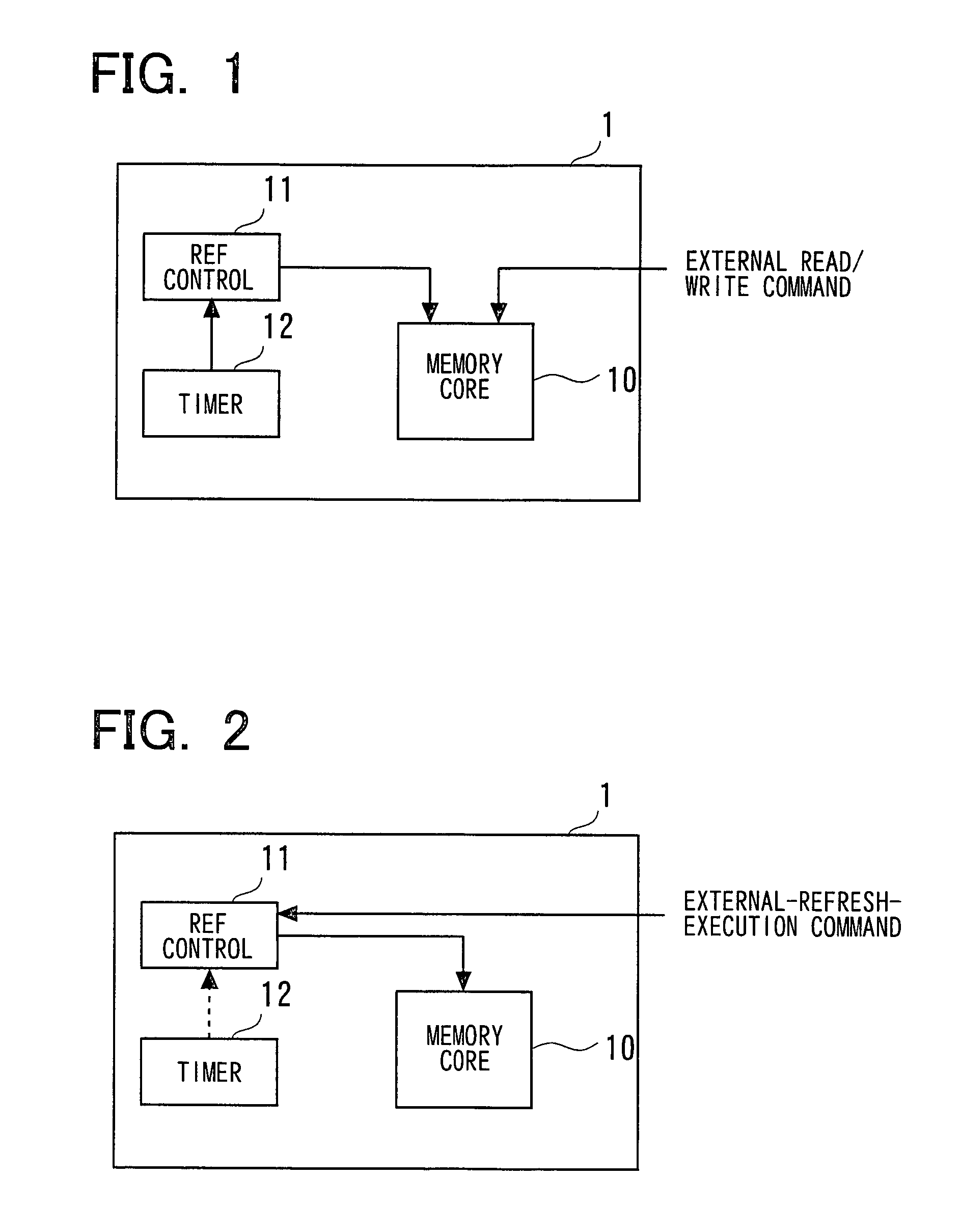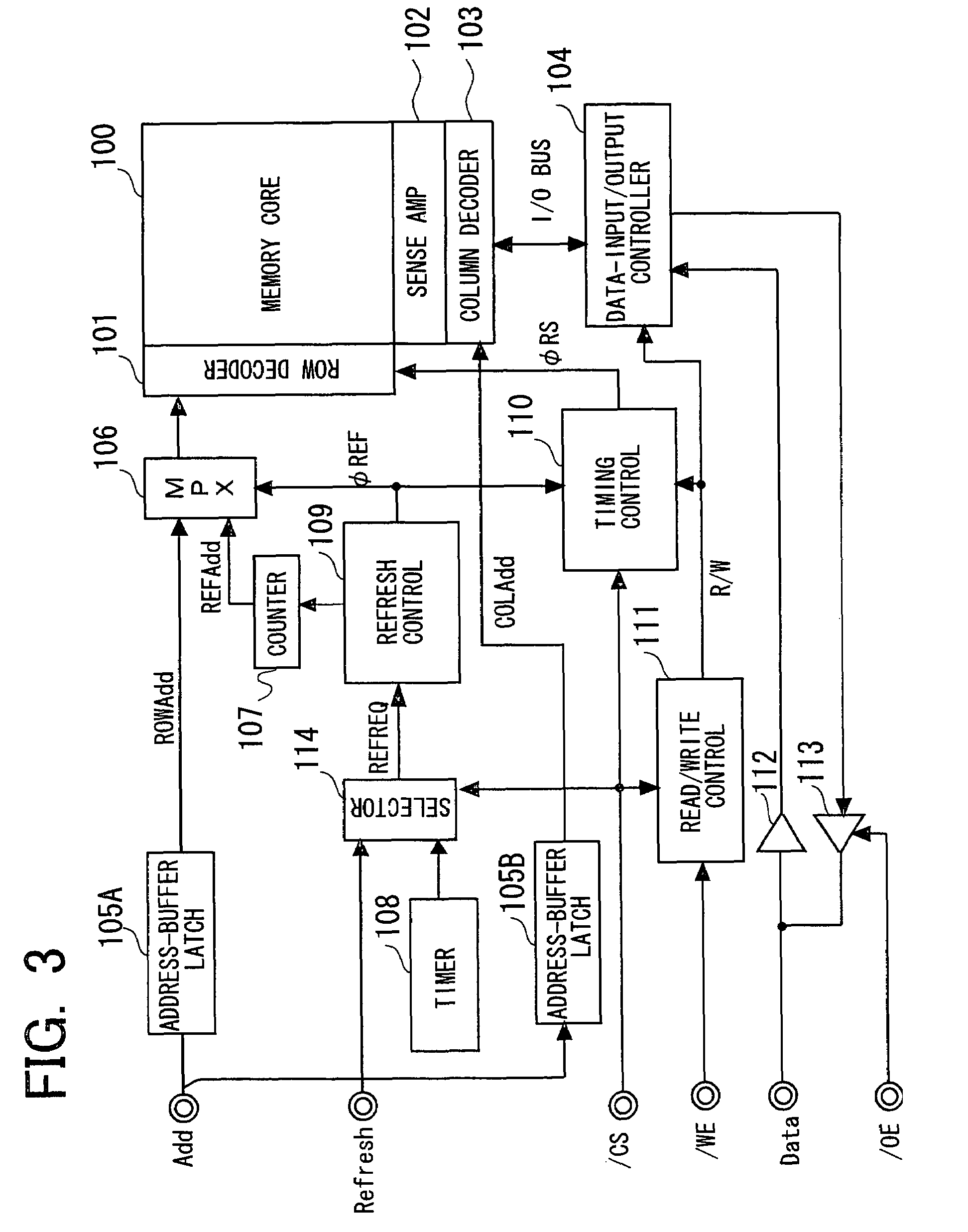Semiconductor memory device and refresh control method
a memory device and memory technology, applied in the field of semiconductor memory devices, can solve the problems of increasing the cost of device testing to the total chip cost, the failure of digit-disturb-hold tests, and the long test time of failures, so as to improve the data-hold characteristics of memory cells, reduce test time, and increase the speed of access time
- Summary
- Abstract
- Description
- Claims
- Application Information
AI Technical Summary
Benefits of technology
Problems solved by technology
Method used
Image
Examples
Embodiment Construction
[0040]A preferred embodiment of the invention will be described below with reference to accompanying drawings. With a semiconductor-memory device according to the present invention, a refresh-execution command is supplied to the semiconductor-memory device from the outside by a CPU, controller and the like, in a standby state. The semiconductor-memory device receives the refresh-execution command and performs the refresh operation. In an active state, the semiconductor-memory device performs hidden refresh that hides the refresh operation from the outside. Any method can be used for performing hidden refresh.
[0041]FIG. 1 is a diagram showing the configuration of an embodiment of the present invention. In FIG. 1, the configuration of a semiconductor-memory device in an active state is schematically illustrated. Referring to FIG. 1, when a semiconductor-memory device 1 is in the active state, an external read / write command supplied to the semiconductor-memory device 1 from outside the...
PUM
 Login to View More
Login to View More Abstract
Description
Claims
Application Information
 Login to View More
Login to View More - R&D
- Intellectual Property
- Life Sciences
- Materials
- Tech Scout
- Unparalleled Data Quality
- Higher Quality Content
- 60% Fewer Hallucinations
Browse by: Latest US Patents, China's latest patents, Technical Efficacy Thesaurus, Application Domain, Technology Topic, Popular Technical Reports.
© 2025 PatSnap. All rights reserved.Legal|Privacy policy|Modern Slavery Act Transparency Statement|Sitemap|About US| Contact US: help@patsnap.com



